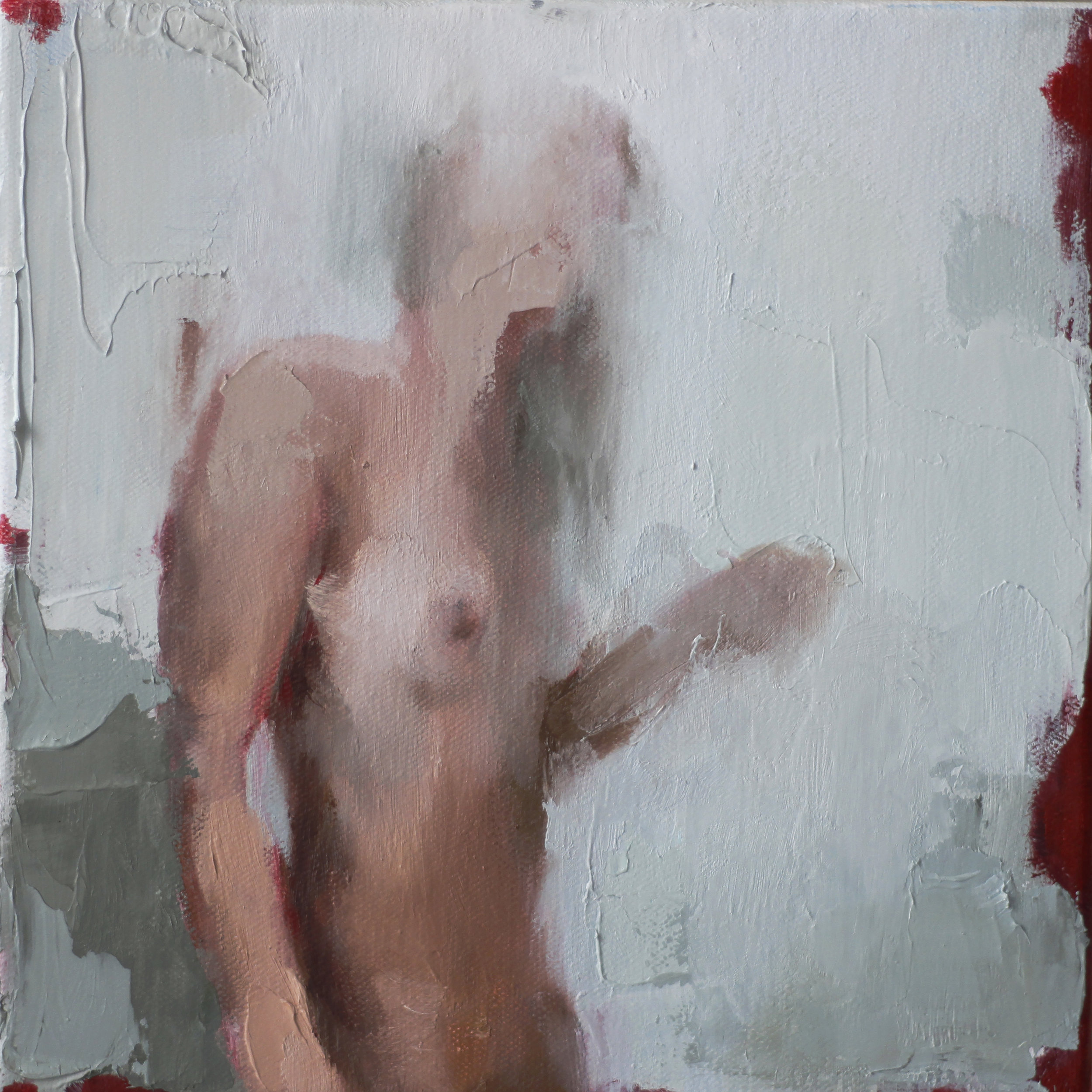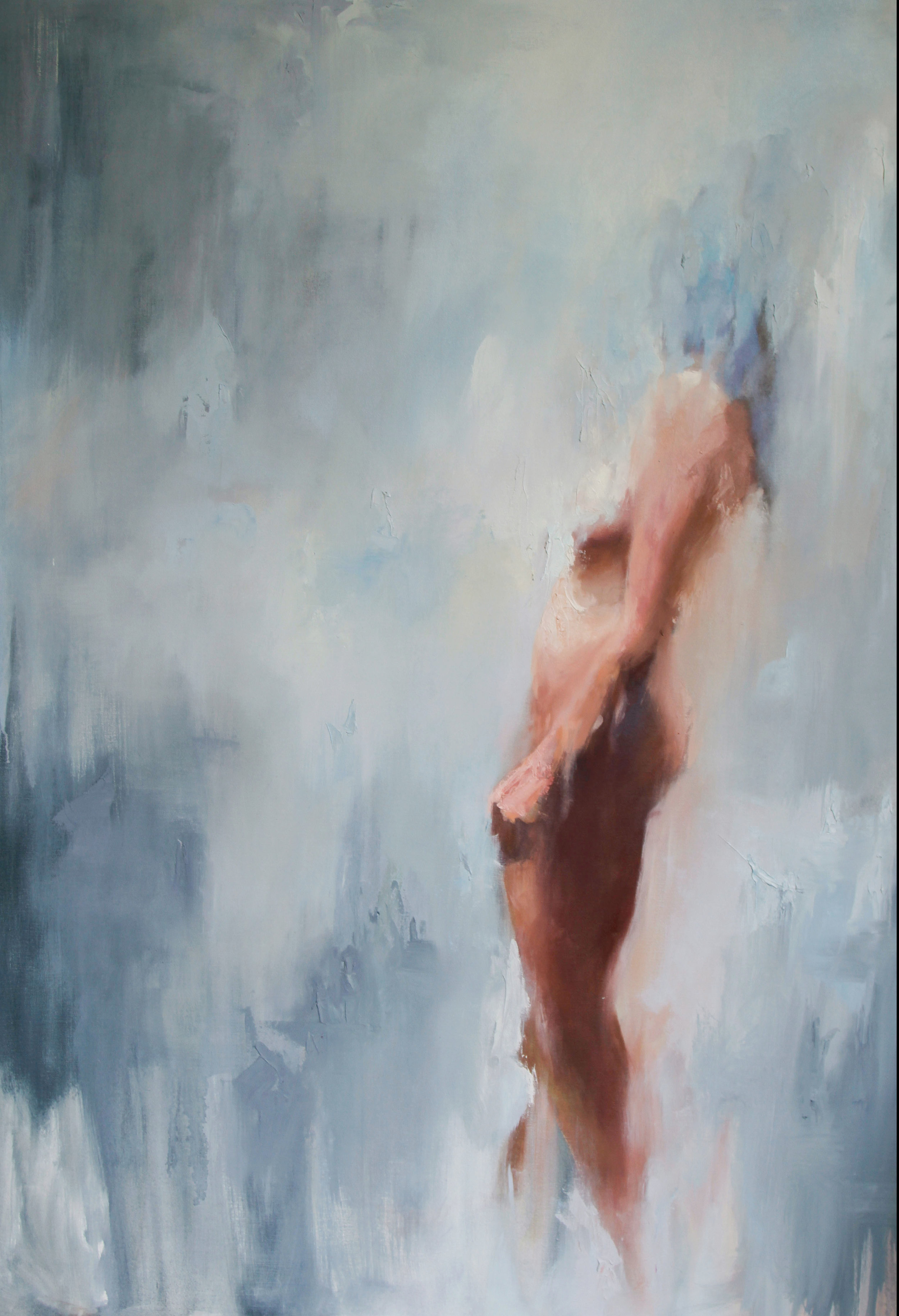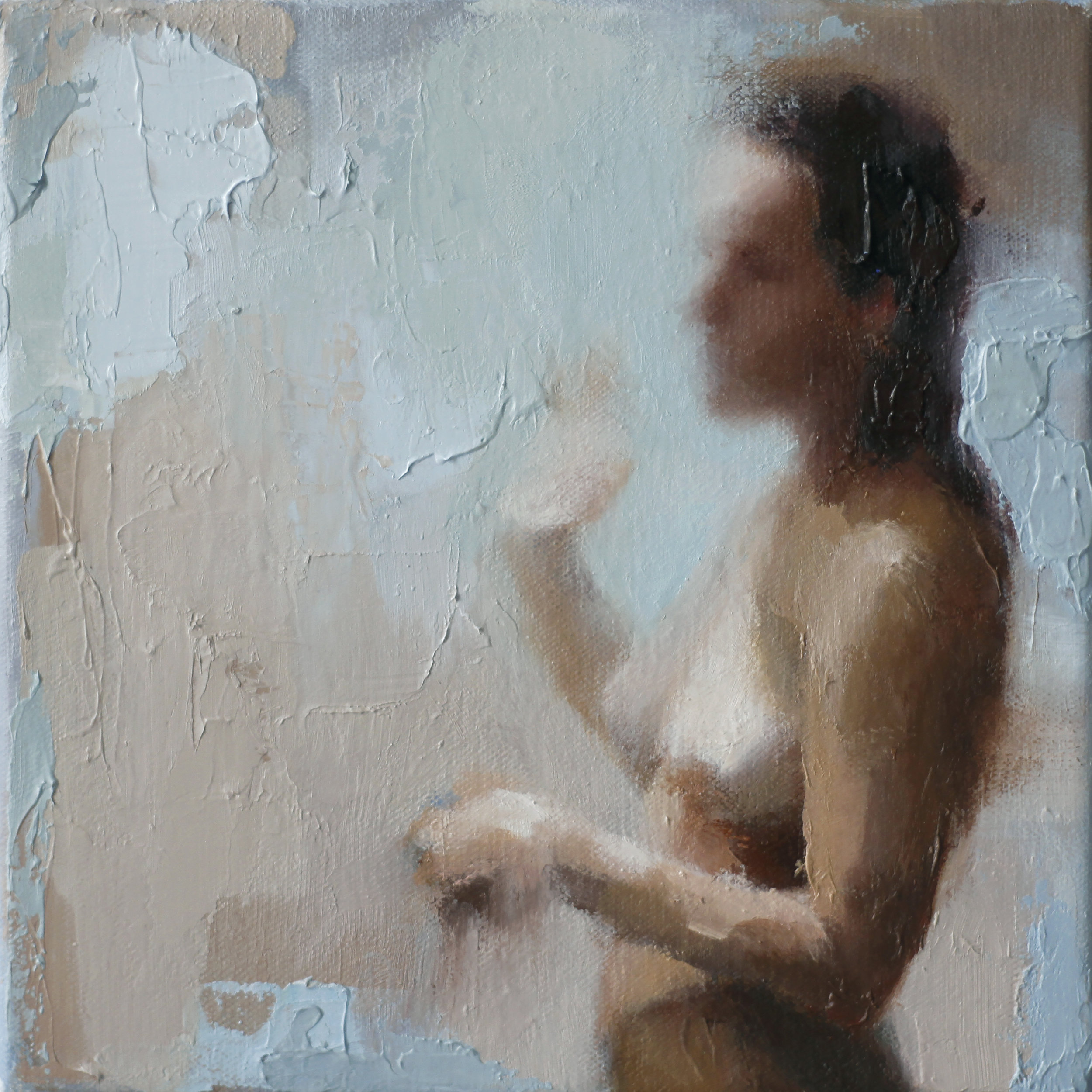Lydia Mozzone is an artist living and working in Boston’s North End. Lydia’s work has exhibited her paintings at the Connecticut Academy of Fine Arts, the Lore Degenstein Gallery in Selinsgrove, PA, and in a two
person show at the Cape Cod Cultural Center, South Yarmouth, MA alongside her mother, Michele Poirier-Mozzone. Her work recently gained regular representation with Coastal Contemporary Gallery in Newport, RI.
Lydia is a painter whose figurative work explores the complex relationships between women and their bodies within the context of contemporary life. She earned her undergraduate degree in studio art at Skidmore College.
In 2018, I selected Lydia as one of ten “Artists to Watch” for Boston Accent Lit and I have continued to follow her work. I am thrilled to share this interview with a talented emerging artist with you.
-Michael
Q1. Your work is primarily figurative and focuses on the nude. Do you have regular models for your paintings or do you work from photographs, memory, etc?
A1. I use photographs I've taken of roommates and friends through a foggy glass shower as reference for my paintings. Using a photo lets me map out my canvas and refer to the image until I'm happy with my drawing and composition. Then, I can put down the image and react to and enhance what the paint is doing organically. I find this process to be very freeing.
Q2. The nude has a long tradition in art history. Do you see your work in conversation with historical precedent or as a departure from past works predominantly created by male artists?
A2. Many classical nudes portray a confident woman who is acknowledging the viewer; she might be looking directly at us, making little effort to conceal herself. I admire these historical paintings, but I do see my work as a departure from that point of view. My "ladies" are very much about of the complicated relationship the modern woman has with her own body rather than a depiction of confidence and sexuality.
Q3. You studied art at Skidmore College. Can you talk more about your educational background and the role it played in shaping your work?
A3. For the first two years as a Fine Art major at Skidmore, we drew the figure and still-life in charcoal. Regardless of concentration, each student had to spend many hours perfecting proportion, perspective and composition in charcoal before exploring other mediums. I think Skidmore's approach directly inspired my "style" once I discovered oils. I have an obsession with realistic figurative areas interacting with loose, textural spaces in a painting. I still do remain more technical at the beginning of a painting, and then let the handcuffs off to achieve the organic marks I love.
Q4. You have shown your work previously at other venues. But what role do you see your relationship with Coastal Contemporary Gallery playing in your career as a fine artist?
A4. Coastal Contemporary is the first gallery to represent my paintings. I'm thrilled to be showing my work in Newport, and am especially excited to have Shari (the director and owner of Coastal Contemporary) representing my paintings. She is an incredible artist herself and has such an elegant and approachable way of speaking about and curating the work in the gallery.
Q5. Your mother is also an artist, Michele Poirier-Mozzone. How has having another artist in your immediate family influenced your development?
A5. My mom has been the biggest influence in my life artistically. She taught me to draw as a kid and has been providing unfiltered, honest critiques ever since. Each of us has turned areas of our homes into a painting studio. Having a home studio is convenient but isolating, so we’re constantly texting images and calling each other to bounce ideas and critiques back and forth.
I'm extremely lucky to have her support as I carve out my own art career. Her work has inspired me to appreciate deliberate brush strokes, to diversify my "go-to" color palettes, and to keep evolving and challenging my own series of work.
Q6. You've mentioned the importance of drawing to your paintings. Do you exclusively work in charcoal? And are your drawings strictly preparatory or would you consider exhibiting them as finished works?
A6. As a student, I worked in charcoal and graphite constantly. Now that I work mainly in oils, I use graphite pencils to sketch composition ideas for larger paintings. When I move to the canvas, I draw out the composition again with a thin brush and oil paint. I no longer treat my drawings as finished works, but I do think it would be really interesting to explore my series in charcoal or graphite one day!
Q7. Speaking of influences, what famous artist(s), historical or contemporary, are you currently inspired by and why?
A7. I look at Gerhard Richter for his beautiful lost edges. I love Alex Kanevsky's figures - his compositions are always so unique and I admire his ability to boldly integrate a flesh tone into a cool background and vice versa. I'm also inspired by Jenny Saville's juicy, gestural strokes; her marks make her paintings feel so emotional.
Q8. You work in a variety of scale from 8" x 8" to works that near life size. What role does scale play in your work?
A8. For years I rarely worked on canvases smaller then 4 feet. Painting the figure at a life-size scale is a really cool exercise; it's a very physical process requiring movement of the whole body. Lately I've been working at a much smaller scale. Initially this transition was out of necessity, as I couldn't fit large stretchers into my apartment, but it has challenged me and taught me a lot. It's much easier to overwork a smaller painting - but smaller canvases also lend themselves to making bolder, textural marks, which I find really exciting.
Q9. Can you speak more to your painting process? Do you create the distinct textures using brush or palette knife or both? How do you develop the unique qualities of your surfaces?
A9. I use a mix of palette knife and brush strokes throughout my painting process. I find I can capture an atmospheric "foggy" feeling best when painting "wet into wet" - so often I'll go over a whole dried canvas with Galkyd medium before going back into it. I try to mix hard and soft edges in my paintings - blurring the background into the figure in some places, and using harder lines elsewhere. I use the palette knife to keep a sense of immediacy and spontaneity throughout my process. I try not to overthink it (though that's easier said than done!).
Q10. What projects are on the horizon for you and how do you see your work growing or changing?
A10. I think it's important that a series of paintings never becomes too formulaic - so I'd like to continue to keep pushing myself out of my comfort zone. Now that I've been working at a small scale, I think it would be really interesting to see how these smaller works would inform my process if I go back to very large pieces. I've also been thinking about using a spotlight in the shower, pumping up the contrast and drama in my pieces.








